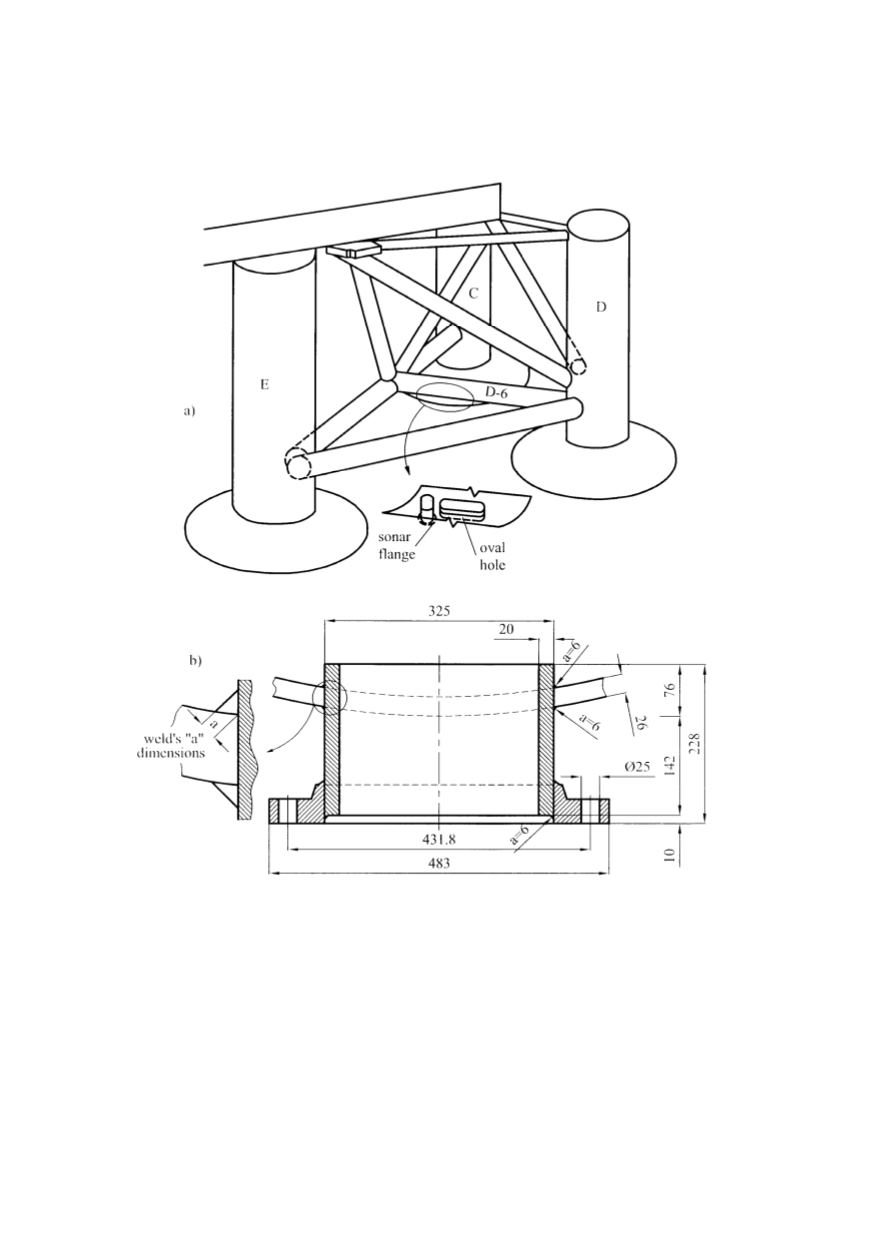

7
the platform had already listed over to an angle of 30-35
°
from the horizontal. Indeed, it
was apparent that only the anchor wire, 'as taut as a violin string', prevented the platform
from turning over completely. At 6.53 p.m., 24 minutes after the 'Mayday' was sent out, it
was recorded that the Alexander Kielland had completely overturned.
Figure 3: a. A detail of the rig, with the location of the sonar flange plate
b. A detail of the flange plate as welded to the main bracing (D-6)
It was later established by the Norwegian Commission that investigated this incident,
that the first thump heard by the radio officer was certainly caused by the fracture of the
main brace, D-6. Then followed, in rapid succession, presumably due to overloading,
failures of the other bracings which connected column D to the platform. The positions of
the various bracings fractures are shown in Fig. 4. The spacing of the latter fractures led
the Commission to conclude that failure of bracings other than D-6 was due to bending.
The failure in bracing D-6, which initiated the structural failure, was clearly due to
fatigue. Indeed, it was later established that prior to the final fracture, the crack had
grown to a length of over 5 m, or ca. 2/3 the circumference of the bracing! Figure 3.b. is a


















